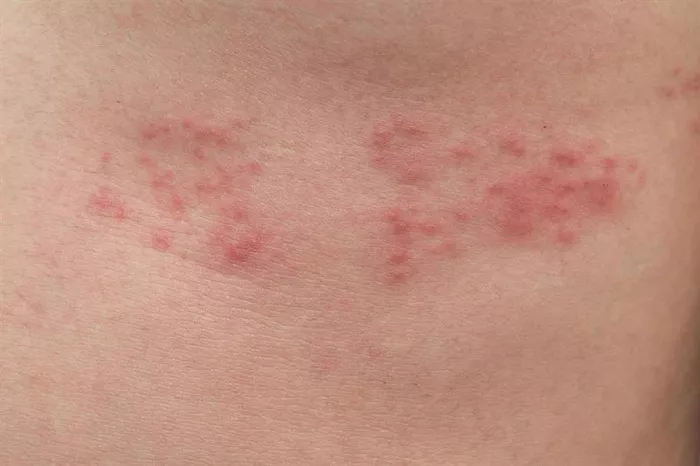Shingles, also known as herpes zoster, is a viral infection caused by the varicella-zoster virus (VZV). This is the same virus that causes chickenpox. After a person has chickenpox, the virus remains dormant in the nervous system. Years later, it can reactivate and cause shingles. Understanding where shingles can occur on the body is crucial for recognizing symptoms and seeking appropriate treatment. This article will explore the common areas where shingles appear, the symptoms associated with these locations, and the factors that can influence the outbreak.
Understanding Shingles
Before diving into where shingles occur on the body, it is essential to understand what shingles is. Shingles typically presents as a painful rash that develops on one side of the body. It usually appears as blisters that can crust over and heal within a few weeks. The pain associated with shingles can be intense and may persist even after the rash has healed, a condition known as postherpetic neuralgia.
The Varicella-Zoster Virus
The varicella-zoster virus is part of the herpesvirus family. It is responsible for chickenpox in children and can remain inactive in the body for many years. The virus tends to reactivate later in life, often when the immune system is weakened. This can happen due to stress, aging, or certain medical conditions.
Common Areas for Shingles Outbreaks
Shingles can occur anywhere on the body, but it most commonly appears in specific regions. The areas affected by shingles are typically related to the nerve roots from which the virus reactivates.
1. The Torso
The torso is one of the most common areas for shingles outbreaks. When the varicella-zoster virus reactivates, it often affects the dermatomes of the thoracic nerves, leading to a rash on the trunk.
Symptoms on the Torso
Location: The rash usually appears as a band or strip on one side of the torso. It can extend from the spine to the front of the abdomen.
Appearance: The rash typically starts as red patches that develop into fluid-filled blisters. These blisters eventually crust over and heal.
Pain: Many people experience significant pain in the affected area, which may feel like burning, stabbing, or throbbing.
SEE ALSO: What Are the Major Causes of Shingles?
2. The Face
Shingles can also affect the face, especially in older adults. When shingles occurs in the facial region, it is known as herpes zoster ophthalmicus, which can lead to serious complications if it involves the eyes.
Symptoms on the Face
Location: The rash may appear on one side of the forehead, around the eyes, or even on the nose.
Appearance: Similar to the torso, the rash starts as red patches and can develop into blisters. The blisters may be small and clustered.
Pain: Pain can be sharp and localized. It may also affect other sensations in the facial area, such as sensitivity to touch.
3. The Neck
Shingles can also appear on the neck. This is typically a continuation of an outbreak that starts in the torso or is related to the cervical nerves.
Symptoms on the Neck
Location: The rash can appear on one side of the neck, often extending down from the scalp or behind the ear.
Appearance: The rash follows the same progression as in other areas, beginning as red patches and developing into blisters.
Pain: Many individuals experience pain that can radiate to the shoulders or head.
4. The Scalp
Shingles can occur on the scalp, particularly in individuals with weakened immune systems.
Symptoms on the Scalp
Location: The rash may be located on the scalp, usually affecting one side.
Appearance: The blisters can be hidden by hair, making them less visible until they rupture.
Pain: The pain can be intense and may be accompanied by sensitivity in the scalp area.
5. The Arms and Legs
Shingles can affect the arms and legs, but this is less common than outbreaks on the torso and face.
Symptoms on the Arms and Legs
Location: The rash usually appears on one arm or leg, following the distribution of the affected nerve.
Appearance: As with other locations, it starts as red patches and may develop into blisters.
Pain: The pain can be sharp and may feel like tingling or burning.
Understanding Dermatomes
The locations where shingles occur correspond to specific areas of the body known as dermatomes. A dermatome is an area of skin that is mainly supplied by a single spinal nerve root. When the varicella-zoster virus reactivates, it typically affects one or more adjacent dermatomes.
Why Shingles Is Unilateral
One of the defining characteristics of shingles is that it typically occurs on one side of the body. This is because the virus reactivates in a single sensory nerve root, leading to symptoms that are confined to the area of skin supplied by that nerve. This unilateral presentation helps differentiate shingles from other skin conditions.
Symptoms Associated with Shingles
The symptoms of shingles vary depending on the area of the body affected. However, some common symptoms include:
1. Rash Development
Initial Stage: The rash begins as small red spots.
Progression: These spots evolve into blisters that can be filled with clear or cloudy fluid. The blisters eventually break open and crust over.
2. Pain and Discomfort
Severity: The pain can range from mild to severe and may feel like a burning sensation.
Location: Pain often precedes the rash by several days and may continue even after the rash has healed.
3. Itching and Sensitivity
Itching: Many people experience itching in the affected area.
Sensitivity: The skin in the affected area may be highly sensitive to touch.
4. Other Symptoms
Fever: Some individuals may experience a mild fever.
Fatigue: General fatigue and malaise can also occur.
Risk Factors for Shingles
Certain factors can increase the risk of developing shingles. Understanding these can help in prevention and management.
1. Age
Shingles is more common in older adults, particularly those over the age of 50. The immune system weakens with age, making it easier for the varicella-zoster virus to reactivate.
2. Weakened Immune System
Individuals with weakened immune systems are at a higher risk. This includes those with:
- Chronic diseases (such as diabetes)
- Autoimmune conditions
- Recent surgery or organ transplants
- Long-term use of immunosuppressive medications
3. Stress and Trauma
High levels of stress or physical trauma can trigger the reactivation of the virus. Emotional stress or significant life events can impact the immune system.
4. History of Chickenpox
Anyone who has had chickenpox can develop shingles later in life, as the virus remains in the body after the initial infection.
Treatment and Management of Shingles
While there is no cure for shingles, early treatment can help reduce the severity of symptoms and shorten the duration of the outbreak. Treatment options include:
1. Antiviral Medications
Common Medications: Acyclovir, valacyclovir, and famciclovir are commonly prescribed antivirals.
Benefits: These medications can help speed up healing and reduce the risk of complications.
2. Pain Management
Over-the-Counter Pain Relievers: Nonsteroidal anti-inflammatory drugs (NSAIDs) such as ibuprofen or acetaminophen can help alleviate pain.
Prescription Medications: In some cases, stronger pain relief may be necessary, including opioids or neuropathic pain medications.
3. Topical Treatments
Creams and Lotions: Calamine lotion or other soothing creams may help relieve itching and discomfort.
4. Vaccination
Shingles Vaccine: The shingles vaccine can reduce the risk of developing shingles and the severity of the disease if it does occur. It is recommended for adults over the age of 50.
Complications of Shingles
While many individuals recover from shingles without serious complications, some may experience:
1. Postherpetic Neuralgia
Definition: This is a condition characterized by persistent pain in the area where shingles occurred, lasting weeks, months, or even years after the rash has healed.
2. Vision Problems
Eye Involvement: If shingles affects the eye (herpes zoster ophthalmicus), it can lead to serious vision problems, including blindness.
3. Secondary Bacterial Infections
Risk of Infection: The blisters can become infected with bacteria, leading to additional complications.
Conclusion
Shingles can occur in various locations on the body, with the torso, face, neck, arms, and legs being the most common areas. Understanding where shingles can appear, along with their symptoms, is vital for early recognition and treatment. If you suspect you have shingles, seek medical attention promptly to manage symptoms and reduce the risk of complications. With appropriate care and vaccination, the impact of shingles can be significantly minimized, allowing individuals to lead healthier lives.
Related topics:


























